Showing Spotlights 1769 - 1776 of 2783 in category All (newest first):
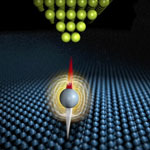 As technology keeps getting faster and smaller, the computer industry is working towards the end of the Moore's Law roadmap where technology will eventually be designed and created at the atomic level. Rather than working their way down incrementally, some researchers are taking a different approach by exploring what happens at the end of Moore's Law, specifically whether it is possible to do computing and other work at that scale. This means they are asking questions like, 'how many atoms are needed to store information', and 'are there schemes to do computation with magnetic atoms instead of transistors'? An IBM research team has now demonstrated, for the first time, the ability to measure how long an individual iron atom can hold magnetic information. They show how a scanning tunneling microscope can measure electron spin relaxation times of individual atoms adsorbed on a surface with nanosecond time resolution using an all-electronic pump-probe measurement scheme.
As technology keeps getting faster and smaller, the computer industry is working towards the end of the Moore's Law roadmap where technology will eventually be designed and created at the atomic level. Rather than working their way down incrementally, some researchers are taking a different approach by exploring what happens at the end of Moore's Law, specifically whether it is possible to do computing and other work at that scale. This means they are asking questions like, 'how many atoms are needed to store information', and 'are there schemes to do computation with magnetic atoms instead of transistors'? An IBM research team has now demonstrated, for the first time, the ability to measure how long an individual iron atom can hold magnetic information. They show how a scanning tunneling microscope can measure electron spin relaxation times of individual atoms adsorbed on a surface with nanosecond time resolution using an all-electronic pump-probe measurement scheme.
Sep 28th, 2010
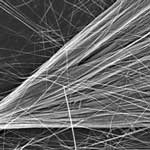 Traditionally, battery materials have been studied with bulk quantities in a complex environment with both active electrode components and many other supporting materials such as polymer binders and conductive additives. Although nanomaterials have been found to be able to improve battery performance, the complexity has made it hard to tell clearly about their advantages. Moreover, it is difficult to know whether fast capacity fading is due to the intrinsic nature of the transport property changes of active nanomaterials or an extrinsic reason from their interactions with the supporting materials, if all of them are studied together. The goal to understand the intrinsic reason of active material capacity fading has motivated a group of researchers to design single nanowire electrochemical devices as an extremely simplified model system to push the fundamental limits of the nanowire materials for energy storage applications. The result is a powerful and effective diagnostic tool for property degradation of lithium ion based energy storage devices.
Traditionally, battery materials have been studied with bulk quantities in a complex environment with both active electrode components and many other supporting materials such as polymer binders and conductive additives. Although nanomaterials have been found to be able to improve battery performance, the complexity has made it hard to tell clearly about their advantages. Moreover, it is difficult to know whether fast capacity fading is due to the intrinsic nature of the transport property changes of active nanomaterials or an extrinsic reason from their interactions with the supporting materials, if all of them are studied together. The goal to understand the intrinsic reason of active material capacity fading has motivated a group of researchers to design single nanowire electrochemical devices as an extremely simplified model system to push the fundamental limits of the nanowire materials for energy storage applications. The result is a powerful and effective diagnostic tool for property degradation of lithium ion based energy storage devices.
Sep 27th, 2010
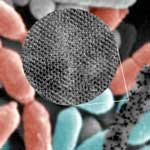 In nature, uni- and multicellular organisms are capable of reducing and accumulating metal ions as detoxification and homeostasis mechanisms when exposed to metal ion solutions. Although the exact mechanisms and identities of microbial proteins associated for metal nanoparticle synthesis are not clear, two cysteine-rich, heavy metal-binding biomolecules, phytochelatin and metallothionein have been relatively well characterized. Phytochelatins are peptides that are synthesized by the protein phytochelatin synthase and that can form metal complexes with cadmium, copper, silver, lead and mercury, while metallothioneins are gene-encoded proteins capable of directly binding metals such as copper, cadmium, and zinc. This capability of phytochelatin and metallothionein - having different metal binding affinities to various metal ions - has now been employed by researchers for the in vivo biosynthesis of metal nanoparticles by recombinant Escherichia coli.
In nature, uni- and multicellular organisms are capable of reducing and accumulating metal ions as detoxification and homeostasis mechanisms when exposed to metal ion solutions. Although the exact mechanisms and identities of microbial proteins associated for metal nanoparticle synthesis are not clear, two cysteine-rich, heavy metal-binding biomolecules, phytochelatin and metallothionein have been relatively well characterized. Phytochelatins are peptides that are synthesized by the protein phytochelatin synthase and that can form metal complexes with cadmium, copper, silver, lead and mercury, while metallothioneins are gene-encoded proteins capable of directly binding metals such as copper, cadmium, and zinc. This capability of phytochelatin and metallothionein - having different metal binding affinities to various metal ions - has now been employed by researchers for the in vivo biosynthesis of metal nanoparticles by recombinant Escherichia coli.
Sep 24th, 2010
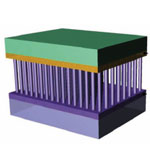 Imagine cellular phones that can be charged during conversations and sound-insulating walls near highways that generate electricity from the sound of passing vehicles. A number of approaches for self-powering systems by scavenging energy from environments using photovoltaic, thermoelectric, and piezoelectric phenomena have been intensively explored. Among them, very recent innovative research has been intensively carried out to convert external mechanical stimuli such as body movements, heartbeat, blood flow, and ultrasonic wave into electricity, resulting in piezoelectric power-driven wireless self-powered systems. Such a piezoelectric power generation aims to capture the normally wasted energy surrounding a system and converts it into usable energy for operating electrical devices. New work by a nanotechnology research team in Korea has now demonstrated that it is possible to use sound as a power source to drive nanogenerators based on piezoelectric nanowires.
Imagine cellular phones that can be charged during conversations and sound-insulating walls near highways that generate electricity from the sound of passing vehicles. A number of approaches for self-powering systems by scavenging energy from environments using photovoltaic, thermoelectric, and piezoelectric phenomena have been intensively explored. Among them, very recent innovative research has been intensively carried out to convert external mechanical stimuli such as body movements, heartbeat, blood flow, and ultrasonic wave into electricity, resulting in piezoelectric power-driven wireless self-powered systems. Such a piezoelectric power generation aims to capture the normally wasted energy surrounding a system and converts it into usable energy for operating electrical devices. New work by a nanotechnology research team in Korea has now demonstrated that it is possible to use sound as a power source to drive nanogenerators based on piezoelectric nanowires.
Sep 23rd, 2010
 Nature can provide very useful templates for technical applications. A group of scientists have devised a new process involving the almost complete conversion of a leaf skeleton into magnetic iron carbide. To do this, they treated the leaf with iron acetate, nitrogen and heat. This technique can be used to recreate all natural carbonaceous structures with metal carbides. The result is not just beautiful, but also very useful. The new technique enables the conversion of metal carbides into intricate microstructures in just one step. Biology's intricate forms provide a wide range of templates for a variety of applications. Wide-ranging biological forms can be used as templates for filigree metal carbide structures using this method.
Nature can provide very useful templates for technical applications. A group of scientists have devised a new process involving the almost complete conversion of a leaf skeleton into magnetic iron carbide. To do this, they treated the leaf with iron acetate, nitrogen and heat. This technique can be used to recreate all natural carbonaceous structures with metal carbides. The result is not just beautiful, but also very useful. The new technique enables the conversion of metal carbides into intricate microstructures in just one step. Biology's intricate forms provide a wide range of templates for a variety of applications. Wide-ranging biological forms can be used as templates for filigree metal carbide structures using this method.
Sep 22nd, 2010
 One possible option for reducing CO2 emissions from power plants is to capture them before they hit the atmosphere and store the gas underground. This technique is called Carbon dioxide Capture and Storage. However, before CO2 can be stored, it must be separated from the other waste gases resulting from combustion or industrial processes. Most current methods used for this type of filtration are expensive and require the use of chemicals. Nanotechnology techniques to fabricate nanoscale thin membranes could lead to new membrane technology that could change that.
Current membranes are in many cases not competitive for large scale applications, because their permeance for carbon dioxide is not high enough. Researchers in Germany have now reported the development and manufacturing of nanometric thin film membranes with record performance.
One possible option for reducing CO2 emissions from power plants is to capture them before they hit the atmosphere and store the gas underground. This technique is called Carbon dioxide Capture and Storage. However, before CO2 can be stored, it must be separated from the other waste gases resulting from combustion or industrial processes. Most current methods used for this type of filtration are expensive and require the use of chemicals. Nanotechnology techniques to fabricate nanoscale thin membranes could lead to new membrane technology that could change that.
Current membranes are in many cases not competitive for large scale applications, because their permeance for carbon dioxide is not high enough. Researchers in Germany have now reported the development and manufacturing of nanometric thin film membranes with record performance.
Sep 21st, 2010
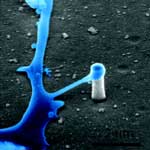 Studies of the interface between nanostructures and live cells have been increasing rapidly in the past few years. Because the size of nanostructures is often comparable to internal organelles inside the cell, those nanostructures are very useful in serving as sensors to detect biological events inside a live cell. For neuroscientists, monitoring the electrical signaling within neural networks is a fundamental issue. It has proven to be very challenging to monitoring individual neuron activities in a neuronal network for an extended time, which demands stable and specific neuron-electrode correspondence. Unfortunately for the scientists, neurons tend to migrate as far as hundreds of micrometers. With a new techniques, researchers have managed to engineer unique nanostructures that foster, rather than impose, residence of neuron cell bodies atop the electrode of interest.
Studies of the interface between nanostructures and live cells have been increasing rapidly in the past few years. Because the size of nanostructures is often comparable to internal organelles inside the cell, those nanostructures are very useful in serving as sensors to detect biological events inside a live cell. For neuroscientists, monitoring the electrical signaling within neural networks is a fundamental issue. It has proven to be very challenging to monitoring individual neuron activities in a neuronal network for an extended time, which demands stable and specific neuron-electrode correspondence. Unfortunately for the scientists, neurons tend to migrate as far as hundreds of micrometers. With a new techniques, researchers have managed to engineer unique nanostructures that foster, rather than impose, residence of neuron cell bodies atop the electrode of interest.
Sep 16th, 2010
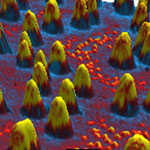 Plastic solar cells are emerging as alternative energy sources for the future because of their potential for cheap roll-to-roll printing, ease of processing, light-weight and flexibility. However, their current performance is still low for practical applications which partially originate from the poor understanding of device physics and nanoscale morphology of the photoactive layer. Photoconductive atomic force microscopy (pcAFM)is a powerful characterization tool to better understand the complex optoelectronic and morphological phenomena of organic solar cells at the nanoscale. This article briefly described the applicability of the pcAFM technique for analyzing solution-processed, polymer and small molecule bulk heterojunction solar cells. Due to the nature of charge generation, transport and collection occurring at the nanometer scale, the useful information on device operation can be lost from macroscopic measurements.
Plastic solar cells are emerging as alternative energy sources for the future because of their potential for cheap roll-to-roll printing, ease of processing, light-weight and flexibility. However, their current performance is still low for practical applications which partially originate from the poor understanding of device physics and nanoscale morphology of the photoactive layer. Photoconductive atomic force microscopy (pcAFM)is a powerful characterization tool to better understand the complex optoelectronic and morphological phenomena of organic solar cells at the nanoscale. This article briefly described the applicability of the pcAFM technique for analyzing solution-processed, polymer and small molecule bulk heterojunction solar cells. Due to the nature of charge generation, transport and collection occurring at the nanometer scale, the useful information on device operation can be lost from macroscopic measurements.
Sep 15th, 2010
 As technology keeps getting faster and smaller, the computer industry is working towards the end of the Moore's Law roadmap where technology will eventually be designed and created at the atomic level. Rather than working their way down incrementally, some researchers are taking a different approach by exploring what happens at the end of Moore's Law, specifically whether it is possible to do computing and other work at that scale. This means they are asking questions like, 'how many atoms are needed to store information', and 'are there schemes to do computation with magnetic atoms instead of transistors'? An IBM research team has now demonstrated, for the first time, the ability to measure how long an individual iron atom can hold magnetic information. They show how a scanning tunneling microscope can measure electron spin relaxation times of individual atoms adsorbed on a surface with nanosecond time resolution using an all-electronic pump-probe measurement scheme.
As technology keeps getting faster and smaller, the computer industry is working towards the end of the Moore's Law roadmap where technology will eventually be designed and created at the atomic level. Rather than working their way down incrementally, some researchers are taking a different approach by exploring what happens at the end of Moore's Law, specifically whether it is possible to do computing and other work at that scale. This means they are asking questions like, 'how many atoms are needed to store information', and 'are there schemes to do computation with magnetic atoms instead of transistors'? An IBM research team has now demonstrated, for the first time, the ability to measure how long an individual iron atom can hold magnetic information. They show how a scanning tunneling microscope can measure electron spin relaxation times of individual atoms adsorbed on a surface with nanosecond time resolution using an all-electronic pump-probe measurement scheme.
 Subscribe to our Nanotechnology Spotlight feed
Subscribe to our Nanotechnology Spotlight feed





